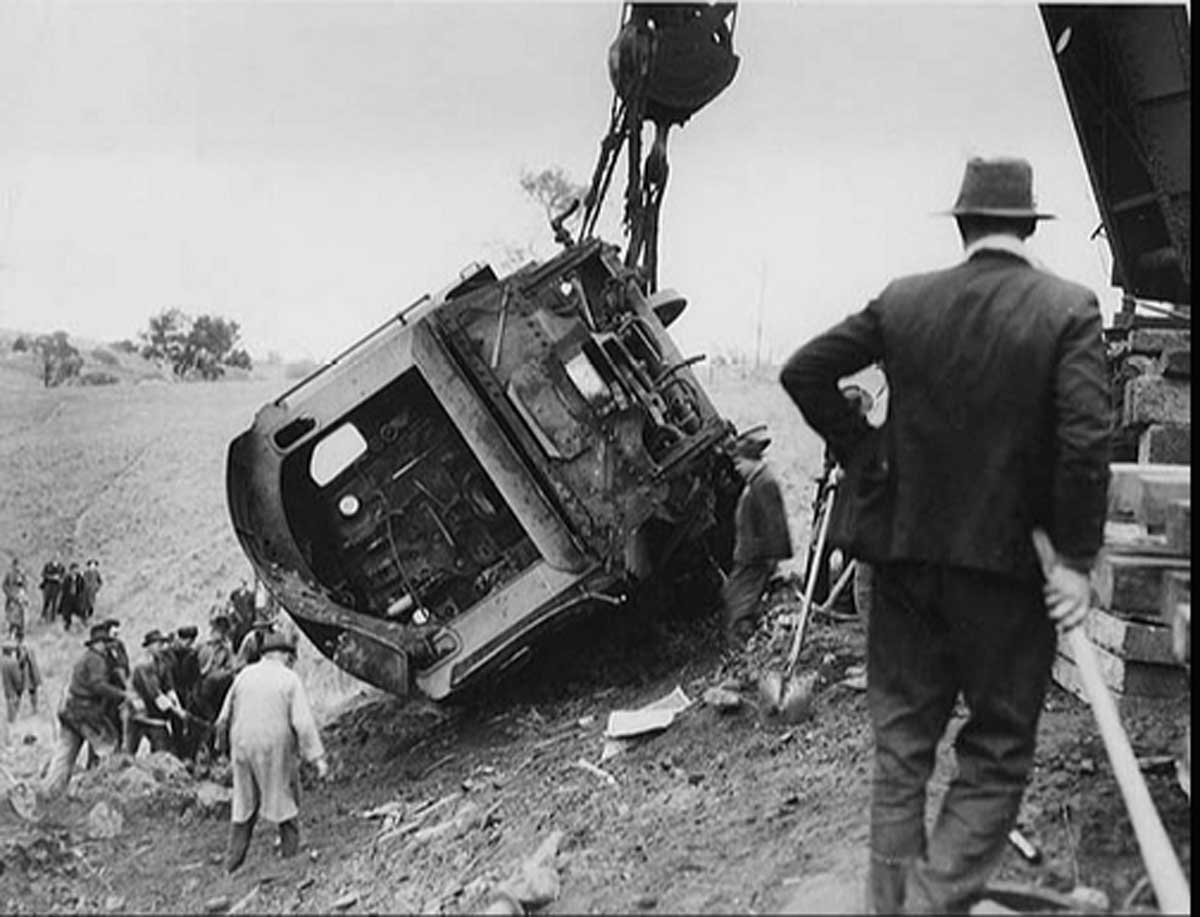Rocky Ponds Rail Disaster The railway has a long and proud tradition in Harden region, but it has not been without incident. The Rocky Ponds Rail Disaster remains the worst of its kind in our area, having claimed four lives and injuring a further nineteen. On June 30th, 1948, a crowded South-West mail train was taking a bend, when the crew began to understand that something was amiss. At that time, the 38-Class locomotive began to tilt sideways, and soon began its 30 foot fall down the embankment. The two freight van immediately behind it were smashed, as they followed the engine’s descent. The carriage behind the vans was catapulted over the engine, smashing to the ground further down the bank. The engine itself had been overturned, with its smoke funnel buried in the earth and wheels in the air. The second carriage was slanted downhill, while another had smashed into the rear of a freight van, inserting itself almost half way. More than 90 metres from the engine lay another carriage on its side, apparently almost somersaulting.
The train was driven by Ernest Nolan of Goulburn, and he was pinned under a heap of coal, and was rescued by the train’s fireman, George Jefferies. Nolan suffered only cuts to his eyes. The South-West Mail was being followed by another train, and someone was sent to the Rocky Ponds Railway Siding to call the next station and stop it. A relief train was sent from Harden to bring the survivors into town. The refreshment room staff remained on duty for the entire day, preparing 200 meals for teams of men who were clearing the wreckage and repairing the railway.
Nick Rawlins was among those who assisted with the clean up. For all the tragedy, the accident was quite the spectacle and was a great source of curiosity for many residents of the district. Tom and Nell Apps followed the railway line out to the site of accident, returning home on George Solah’s truck. The accident also brought a great amount of media attention, with one Harden resident sharing a story of the hospital matron condemning a reporter to hell, when he presented himself at the hospital. It was discerned that the derailment was caused by the spreading of a rail over a worn out, old sleeper.
The area where the accident occurred had many worn sleepers, and it was believed that heavy rains caused a bolt to loosen from the sleeper. One of the rails was torn from the track in the course of the accident, embedding itself in the locomotive. The Temora Mail had passed through the area only half an hour before without incident. At the time of the accident, it was the worst New South Wales had seen in 22 years. It claimed the lives of Mrs Jane Matilda Burnes of Leeton, Keith Shuttlework of Leeton, S. B. Walsh of Narrandera and Arthur Churchin of Braidwood. The coroner, W. H. Powell, would rule their deaths accidental.
The nineteen injured people were admitted to the Harden Hospital, with one later flown to Sydney. It was reported at the time that “blood plasma” was flown from Sydney to Cootamundra, then transported by wagon to Harden, in order to treat some the injured. It would take authorities a week for two 70-ton cranes from Enfield and Broadmedow to reach the scene and lift the train back on the tracks. It was described as being the one of the biggest weight-lifting jobs undertaken in NSW, at the time. The tender was also returned to the tracks. The project was watched by more than 1500 people, with some travelling over 100 miles to observe it.

